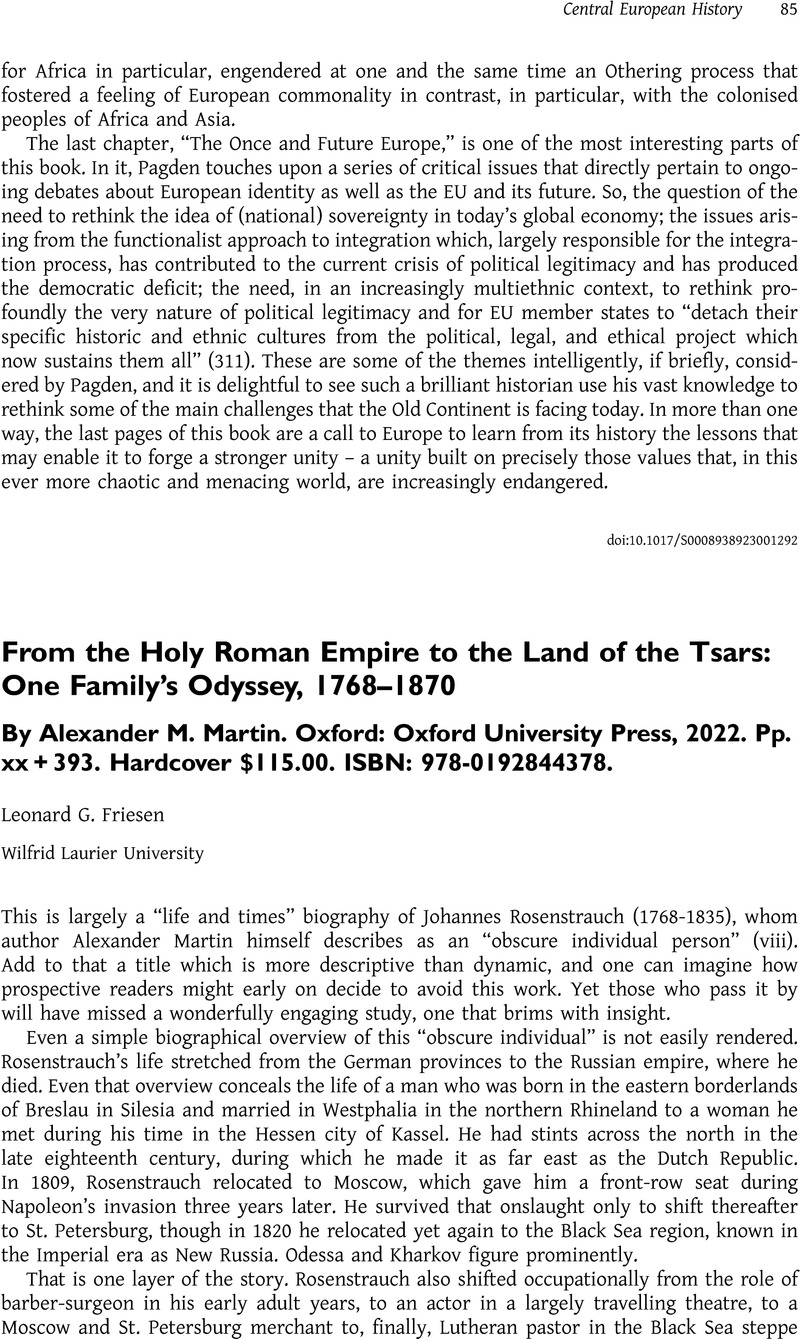No CrossRef data available.
Article contents
From the Holy Roman Empire to the Land of the Tsars: One Family's Odyssey, 1768–1870 By Alexander M. Martin. Oxford: Oxford University Press, 2022. Pp. xx + 393. Hardcover $115.00. ISBN: 978-0192844378.
Review products
From the Holy Roman Empire to the Land of the Tsars: One Family's Odyssey, 1768–1870 By Alexander M. Martin. Oxford: Oxford University Press, 2022. Pp. xx + 393. Hardcover $115.00. ISBN: 978-0192844378.
Published online by Cambridge University Press: 15 March 2024
Abstract
An abstract is not available for this content so a preview has been provided. Please use the Get access link above for information on how to access this content.

- Type
- Book Review
- Information
- Copyright
- Copyright © The Author(s), 2024. Published by Cambridge University Press on behalf of Central European History Society of the American Historical Association




